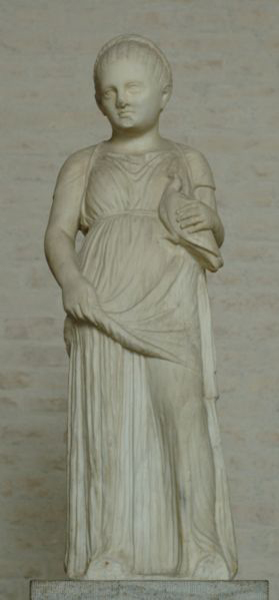Women and children in Ancient Greece were the property of their fathers or husbands. They had very few rights or means to look after themselves outside of the family structure. As such, their lives revolved almost exclusively around the domestic sphere. However, religion was extremely important and they often went to various temples for rites and offerings.
Children were often shown holding animals, either their pets or temple offerings in Greek sculpture. This young girl, wearing a full-length chiton, holds a dove tight to her body. In Greek mythology, the dove was associated with Athena, representing the renewal of life. Doves are often shown in funerary settings. Perhaps this girl was a votive associated with a temple to Athena or a specific child who died.
Greek clothing is typically shown flowing with layers of drapery that seem to cling to the limbs of the wearer. This is a convention, but is meant to illustrate the skill of the sculptor to show the cloth as well as the body beneath. The chiton she wears shows the usual daywear of a young girl from a good family.

